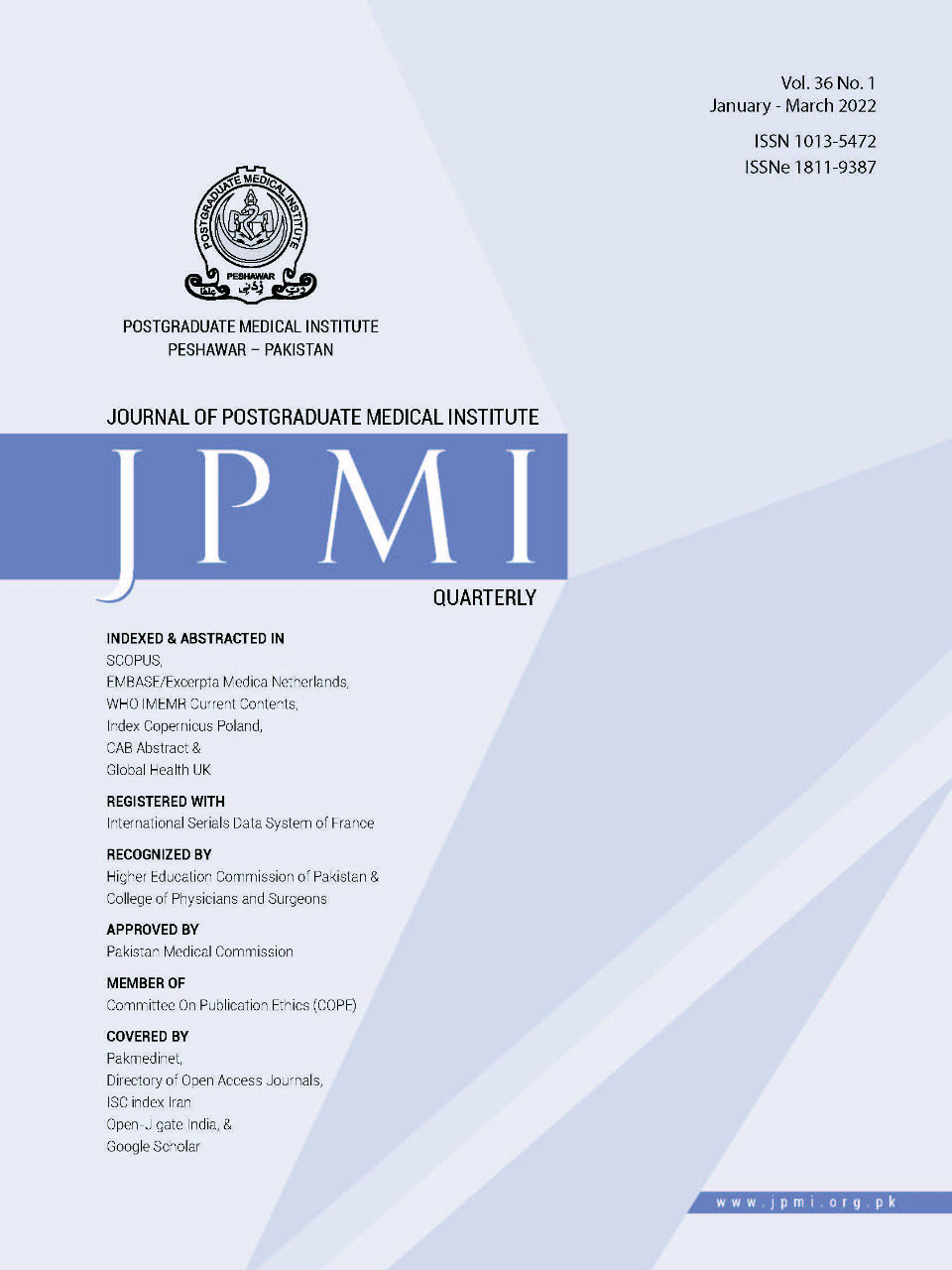ASSESSING CLINICAL OUTCOMES OF CASES OF BELL’S PALSY IN A TERTIARY CARE HOSPITAL
Main Article Content
Abstract
Objective: To assess the clinical outcomes of Bell’s palsy in patients presenting to a tertiary care hospital
Methodology: The descriptive study was conducted at the Department of Neurology, Lady Reading Hospital from 1st June 2017 to 31st July 2018 on 113 patients using non-probability purposive sampling. Patients, received at the department of neurology or referred from the department of maxillofacial surgery and neurosurgery, between 16 and 80 years of age with idiopathic unilateral facial weakness were included in the study, after taking informed consent and approval from the ethical committee. The patient data regarding the demographic details, clinical features, risk factors, and follow-up outcomes were entered into a pre-designed proforma. The data was analyzed using SPSS version 20.
Results: Out of 156 patients who presented with bell’s palsy, 113 fulfilled the inclusion and exclusion criteria. Majority were females (n=58, 51.32%) and had laterality on the right side (n= 64, 56.63%). High incidence was noted in patients in the age range 16-29 years (n=51, 45.13 %). The commonest risk factor was hypertension (n=9, 7.96%).
Conclusion: The common risk factors of Bell’s palsy in our setup are hypertension, diabetes, and pregnancy in chronological order. There is strong evidence of benefits from the early use of corticosteroids.
Article Details
Work published in JPMI is licensed under a
Creative Commons Attribution-NonCommercial 2.0 Generic License.
Authors are permitted and encouraged to post their work online (e.g., in institutional repositories or on their website) prior to and during the submission process, as it can lead to productive exchanges, as well as earlier and greater citation of published work.
References
Tiemstra JD. Bells palsy: Diagnosis and management. Am Fam Physician. 2007;76(7):997–1002.
Journal Article. Bell palsy [Internet]. Medscape.com. 2022. Available from: https://emedicine.medscape.com/article/1146903-overview.
Gilden DH. Bell’s Palsy. N Engl J Med . 2004;351(13):1323–31. DOI.org/10.1056/nejmcp041120
Goroll AH, Mulley AG. Primary care medicine: office evaluation and management of the adult patient. Philadelphia (PA; Lippincott Williams & Williams; 2009.
Gaynor I, Madhok VB, Daly F, Sullivan F. Antiviral treatment for Bell’s palsy. Cochrane review. 2019.
Loukas M. The neurologist’s dilemma: A comprehensive clinical review of Bell’s palsy, with emphasis on current management trends. Med Sci Monit. 2014;20:83–90. DOI.org/10.12659/msm.889876
Hilsinger RL Jr, Adour KK, Doty HE. Idiopathic facial paralysis, pregnancy, and the menstrual cycle. Ann Otol Rhinol Laryngol. 1975;84(4 Pt 1):433–42. DOI.org/10.1177/000348947508400402
Riga M, Kefalidis G, Danielides V. The role of diabetes mellitus in the clinical presentation and prognosis of Bell palsy. J Am Board Fam Med. 2012;25(6):819–26.DOI.org/10.3122/jabfm.2012.06.120084
Glass GE, Tzafetta K. Bell’s palsy: a summary of current evidence and referral algorithm. Fam Pract. 2014;31(6):631–42.DOI.org/10.1093/camera/cmu058
Tovi F, Hadar T, Sidi J, Sarov I, Sarov B. Epidemiological aspects of idiopathic peripheral facial palsy. Eur J Epidemiol. 1986;2(3):228–32.DOI.org/10.1007/bf00211536
Ahmed A. When is facial paralysis Bell palsy? Current diagnosis and treatment. Cleve Clin J Med. 2005;72(5):398–401, 405.DOI.org/10.3949/ccjm.72.5.398
Mansoor SN, Rathore FA. Myths and misconceptions regarding facial nerve palsy management: Interesting perspectives From a developing Country. J Neurosci Rural Pract. 2015;6(3):454–5.DOI.org/10.4103/0976-3147.158756
Naveed S, Tasleem HN. Bell’s palsy “laqwa”: Survey based study. OAlib . 2014;01(04):1–5.DOI.org/10.4236/oalib.1100487


